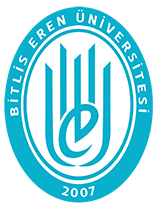Optic Character Recognition Using Image Processing Techniques
Abstract
In pattern recognition, the automatic identification of image-based input patterns by machine is an important problem. The need to convert images taken with tools such as cameras into formats usable by computers is increasing day by day. The output and efficiency of manual data entry processes are low and error rates are high. Outsourcing these processes to companies dealing with professional information entry is not preferred due to reasons such as security and lack of continuous service quality. For these and similar reasons, a system that enables automatic recognition of optical characters is aimed. With the help of this system, it is aimed to provide the opportunity to serve more people in a shorter time. In accordance with the stated objectives, a unique dataset has been created by performing identification card segmentation. This dataset was combined with the standard OCR dataset and classification was performed with ANN and proposed CNN methods on the extended dataset. The proposed CNN method, inspired by the Inception V3 model, is a deep learning model consisting of 15 layers. The ANN model uses features obtained from different wavelet types to increase discrimination. Competitive results were obtained from both ANN and proposed CNN models. In the proposed CNN model, in the extended version of the dataset, 99.49%, 98.87%, 99.48% and 99.50% values for F1 score, recall, precision, and accuracy metrics were obtained in the same order for training. Similarly, for validation, 99.13%, 98.43%, 99.21% and 99.27% values were obtained in the same order.
Collections

DSpace@BEU by Bitlis Eren University Institutional Repository is licensed under a Creative Commons Attribution-NonCommercial-NoDerivs 4.0 Unported License..













